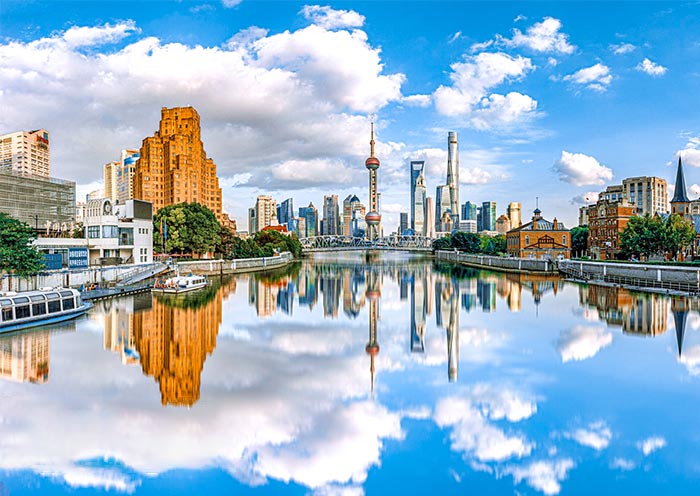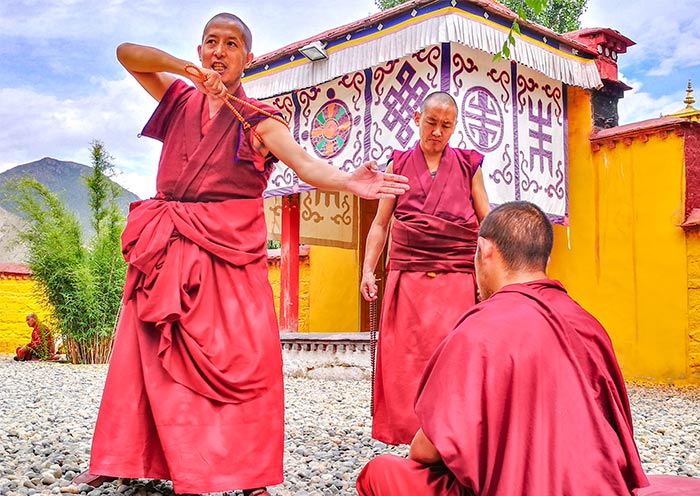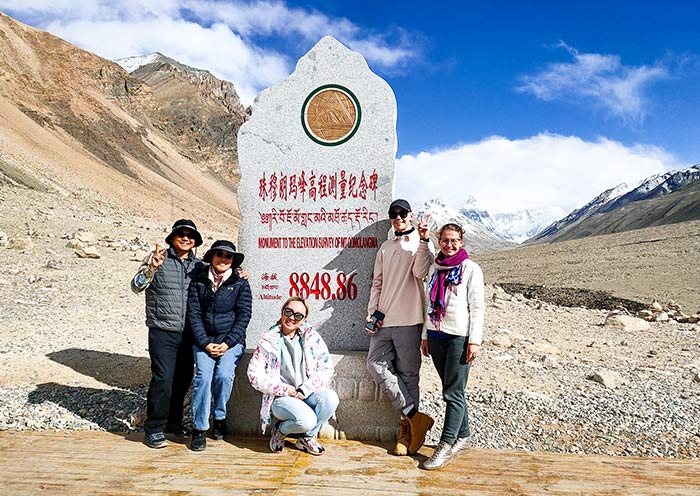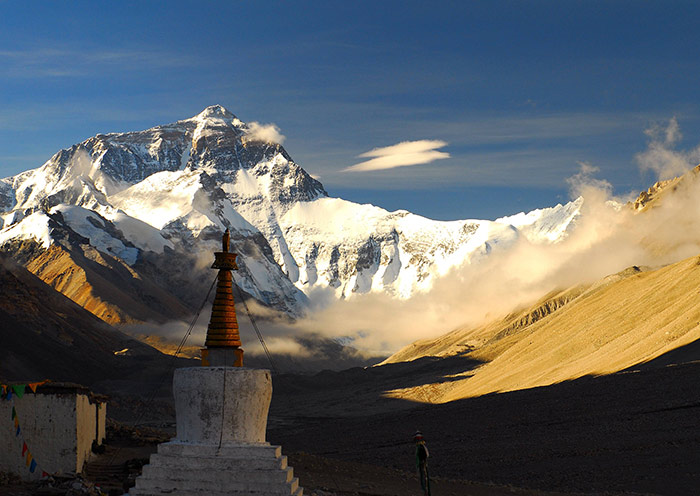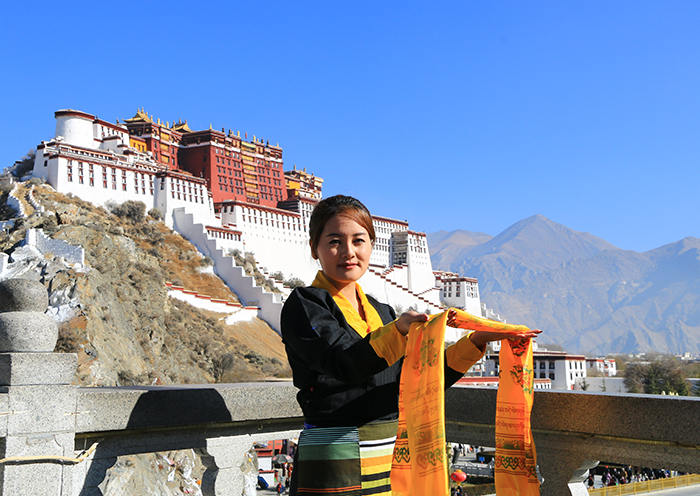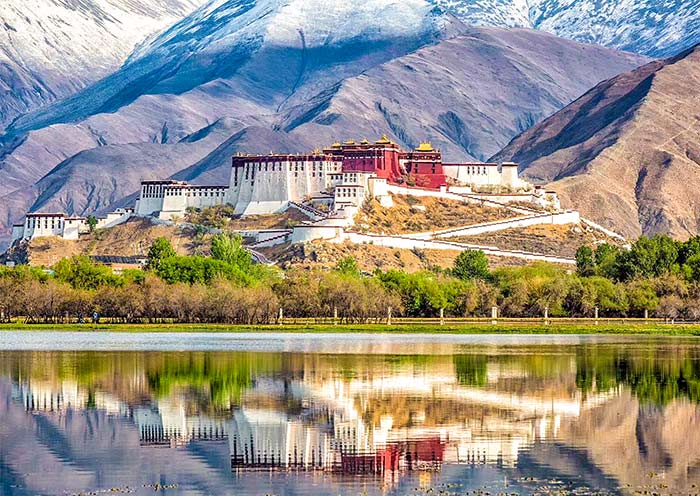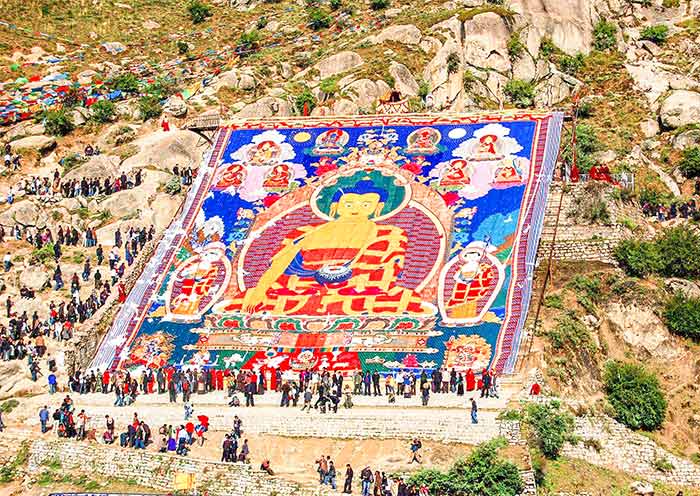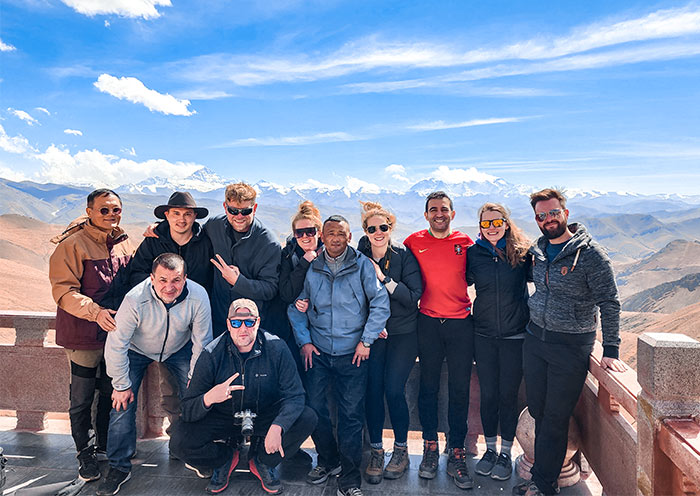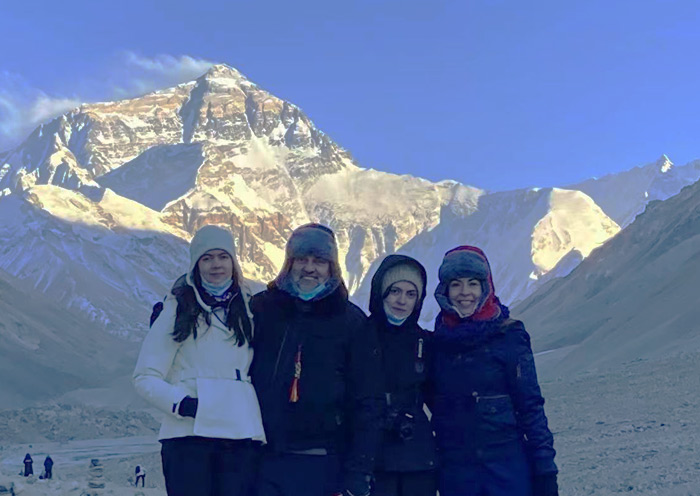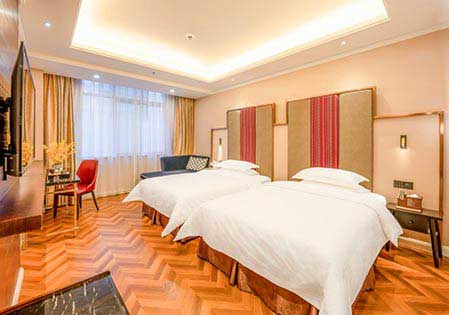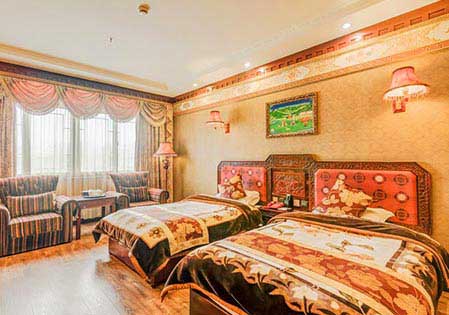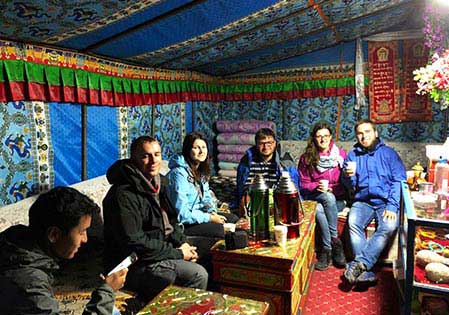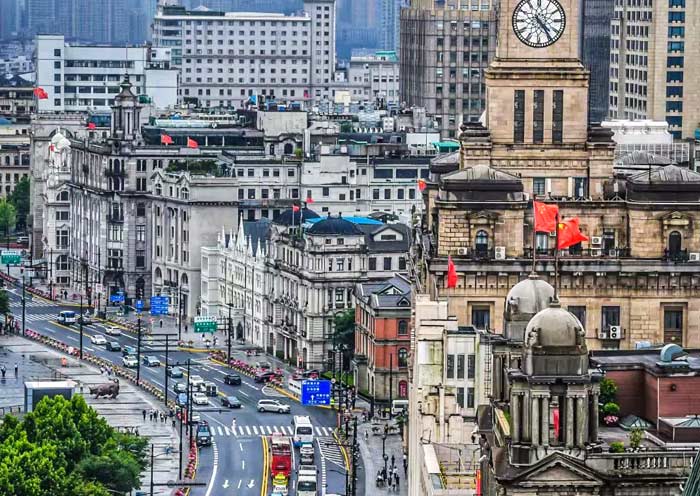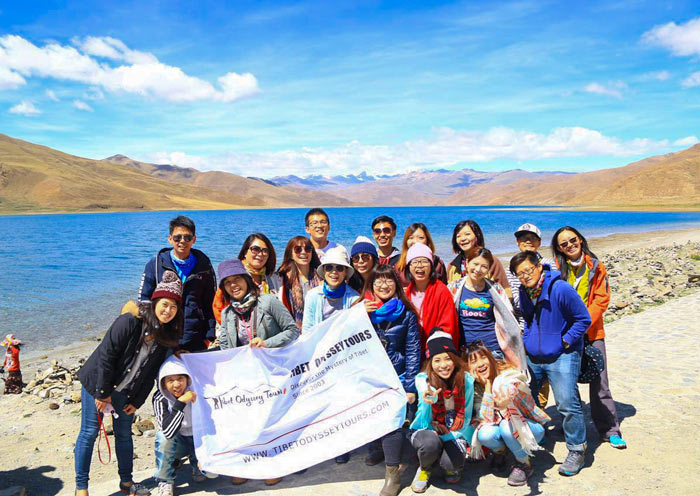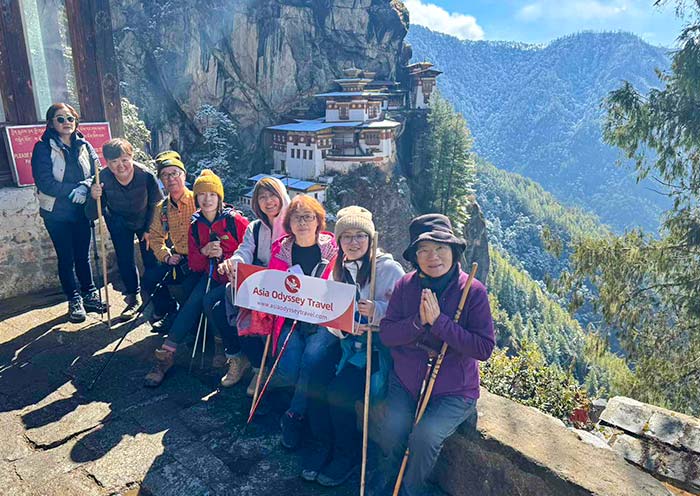Today, drive about 7.5 hours (400km) from Lhasa to Shigatse (3,850m) via Gyantse (3,950m). You will visit two amazing natural landscapes - Yamdrok Lake and Karola Glacier on the way, then after a visit of Pelkor Monastery in Gyantse, you will reach Shigates for overnight.
In the morning, you will head to the Kampala Pass (4,797 meters) and have a breathtaking view of Yamdrok Lake (a freshwater lake) down below as well as spectacular views of the holy Mt. Nyenchen Khangsar (7,206m) in the distance. It is one of the four largest sacred lakes in Tibet along with Lake Lhamo Latso, Lake Manasarovar, and Lake Namtso. And Lake Yamdrok is said to be able to help Tibetans find the reincarnated soul of the Dalai Lama. You will be happy to see dressed-up Tibetan mastiffs/dogs, goats, and yaks there. It is optional for you to pay 5-10 yuan to pose with and take photos of them, for local Tibetans, it’s a subsidy income for their family.
Then, drive to visit one of the most beautiful Glaciers in Tibet - Karola Glacier, the location of the film Red Valley (Hong He Gu). As one of Tibet's three major continental glaciers, backed by the southern slope of Naiqin Kangsang Peak (7,191 meters), one of the four highest peaks in Tibet, this white glacier is also the source of the eastern part of the Nianchu River. The **Karola Glacier (**5,012m) is only 300 meters away from the highway connecting Lhasa to Gyantse town. You can view it right off the highway from your car. Sure you can easily walk to the foot of the charming glacier which shape is like a frozen waterfall right above the road and you. Besides the fantastic hike to the Karola Glacier, on the opposite side of the road, you can appreciate the beautiful snow-capped mountain of Mt Kalurong.
Karola Glacier Visiting Notes:
- The altitude at the glacier scenic spot is about 5,012m, be sure to slow down to avoid altitude sickness.
- The public toilet at the glacier is very basic.
- Local people would ask you to take photos with them for a fee. Be sure to ask before taking photos to avoid potential little troubles.
After that, drive on the Friendship Highway( between Tibet and Nepal) to Gyantse, the third largest city of Tibet after Lhasa and Shigates, and visit Pelkor Monastery.
Pelkor Monastery (Palcho Monastery) is an important site for Tibetan Buddhism, as it houses different sects including the Gelug, Sakyapa, and Kadampa. Pelkor Monastery, with a history over 600 years, is also renowned for its impressive architecture, which blends Tibetan, Nepalese, and Han Chinese styles. One of the main attractions of Pelkor Monastery is the Kumbum Stupa (Gyangtse Kumpum), which is a nine-story tower adorned with thousands of images of Buddhas and Bodhisattvas. It is said to be the largest such structure in Tibet. Visitors can enjoy their time by witnessing the daily rituals and prayers of the monks, and have a panoramic view of the surrounding landscape from the top of the Kumbum Stupa (100-Thousand-Buddha Pagoda). You can also catch the far view of Gyantse Fortress (Gyantse Dzong).
After that, drive about 90km to reach Shigatse for overnight.

